记录小组:2302班4组
组员:杨润邦 温衡 王楚淇 吕雪瑶 邓晨曦
7月8日早晨8点15,同学们准时来到了阶梯教室中,按照预先的分组开始了对前几日在实验室中取得的样本照片等进行了分析工作工作。
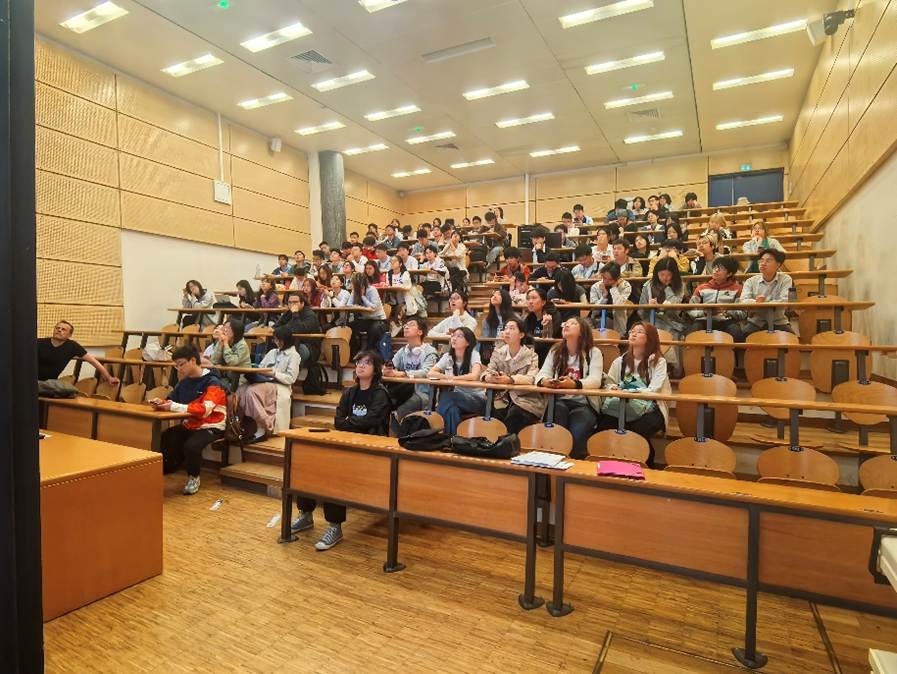
在确认了每个小组的分工之后,同学们投入到了紧张的工作当中,有些直接前往实验室进行最前端的实验数据测算,有的在自己已经拍摄照片的基础上进行数据大类的分析鉴定,忙的热火朝天,法方老师们也投入到紧张的氛围中去,协助学生们攻克实验上的难题和数据上的披露协调。每一种分工都可以说是一项精细工作,每种成分,每个指标都有不同的分析方法,让我们一时有些眼花缭乱。好在老师们经验丰富,在我们最困惑的地方指点迷津。在他们的悉心指导下,同学们很快便掌握了诀窍,顺利的完成了上午的实验活动。
午饭后,同学们分成了两组。一组留在Evry继续完成实验课程内容;另一组则乘坐巴士前往距离不远的 SOLEIL 实验室参观学习。
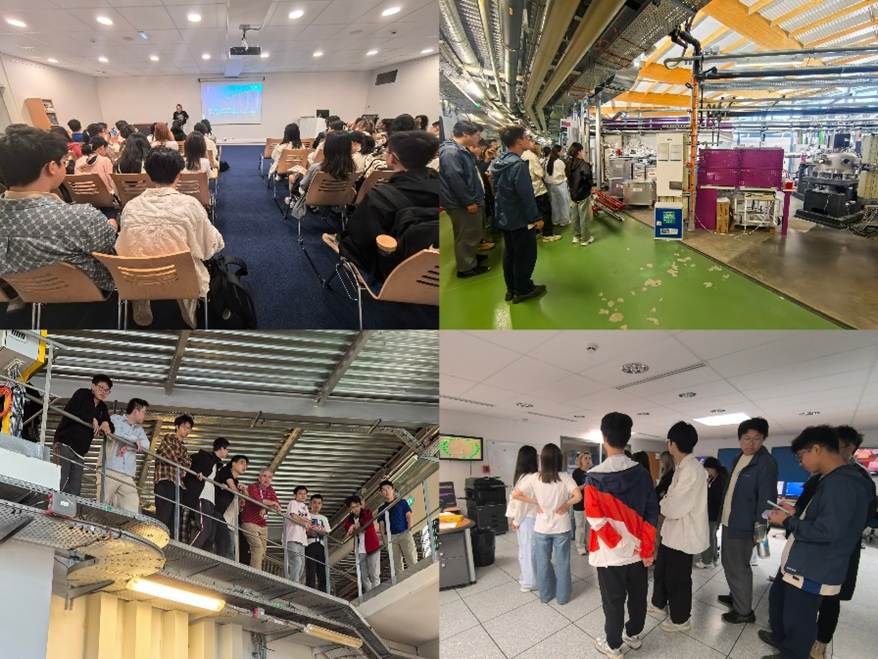
SOLEIL 实验室的名字在法语译为 “太阳”,全称是 Source Optimisée de Lumière à Energie Intermédiaire du LURE。它位于巴黎大区南部埃松省(Essonne)圣奥班(Saint-Aubin)市的萨克莱高地上,是世界领先的第三代同步辐射光源研究实验室。
在研究所工作人员的引领下,我们走进了实验室的核心区域。负责人首先为我们介绍了实验室的核心设备——回旋加速器。它由三个主要部件组成:电子发射源负责产生电子;小圈加速磁场在原型磁场的约束下,将电子加速到 2750 eV的能量;大圈加速磁场则用于分流不同实验所需的各能级高质量电子束。
尽管高能回旋加速器听起来有些危险,但实验室的工作人员向同学们讲述,它的设计极其安全。加速器外壳采用一体浇筑技术制成,内部配备了多个辐射监测装置和数控一体化的控制中心,还有各种精密测量仪器。站在加速器上方,我们能够感受到轻微的震动,但完全没有任何危险。为了让我们安心,研究人员甚至带着我们一起轻轻跳了几下,证明即使是较大的动静也不会影响设备的运行。
研究员还耐心地讲解了高能回旋加速器的用途以及它在科学界的巨大价值。从微观世界的基础研究到前沿科技的探索,这台设备发挥着无可替代的作用。在参观过程中,我们仿佛走进了一个充满未来感的科学殿堂,收获满满。
两个小时的参观很快结束,我们在实验室门口拍了一张难忘的合照,随后依依不舍地返回了evry大学。
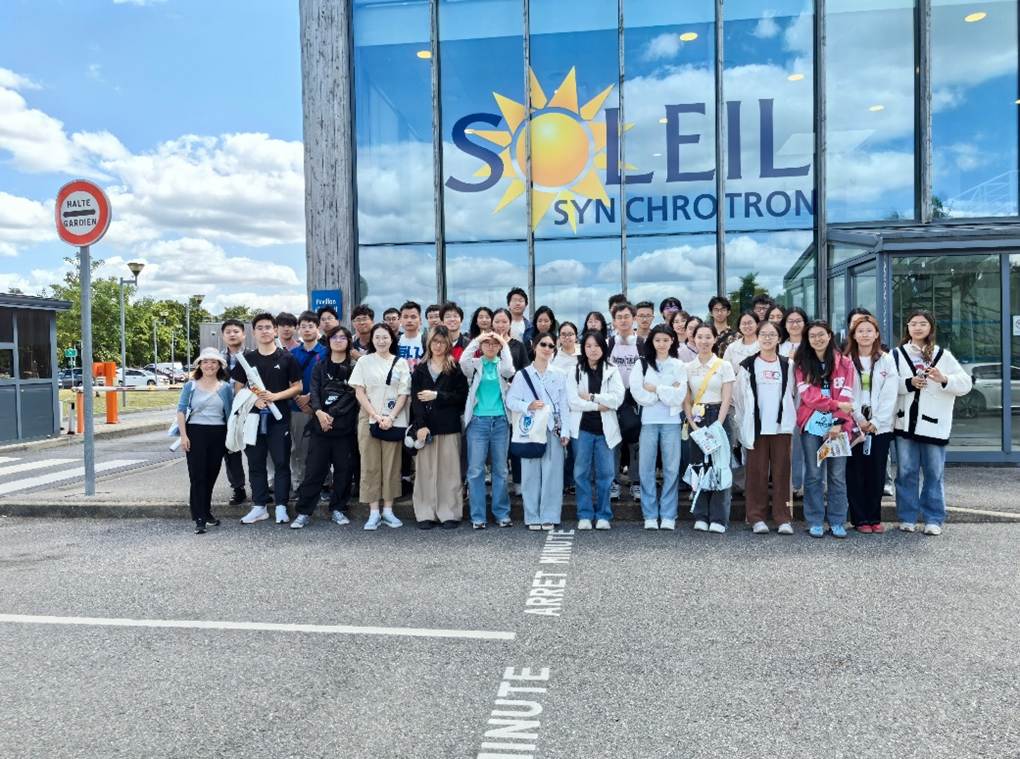
当晚,萨克雷大学的老师和同学们为我们中法大家庭举办了葡萄酒与奶酪讲座及品鉴会,法国的葡萄酒和奶酪文化是其饮食与生活方式的重要标志,渗透在日常社交与传统中。葡萄酒不仅是饮品,更是法国人日常用餐的一部分,无论是家庭聚餐还是朋友小聚,搭配餐点饮用葡萄酒是常见习惯,还衍生出专业的品酒文化,包括对酒的香气、口感、余味等的品鉴。同学们先后品鉴了白葡萄酒,香槟,以及红葡萄酒,增进着对法国酒文化的了解。法国奶酪据统计有数百种,在这次讲座上,同学们品尝了柔软的卡门贝尔奶酪、浓郁的罗克福蓝纹奶酪到坚硬的孔泰奶酪等,每种都有其独特的制作工艺和风味,多与当地的牛奶及传统技法相关。
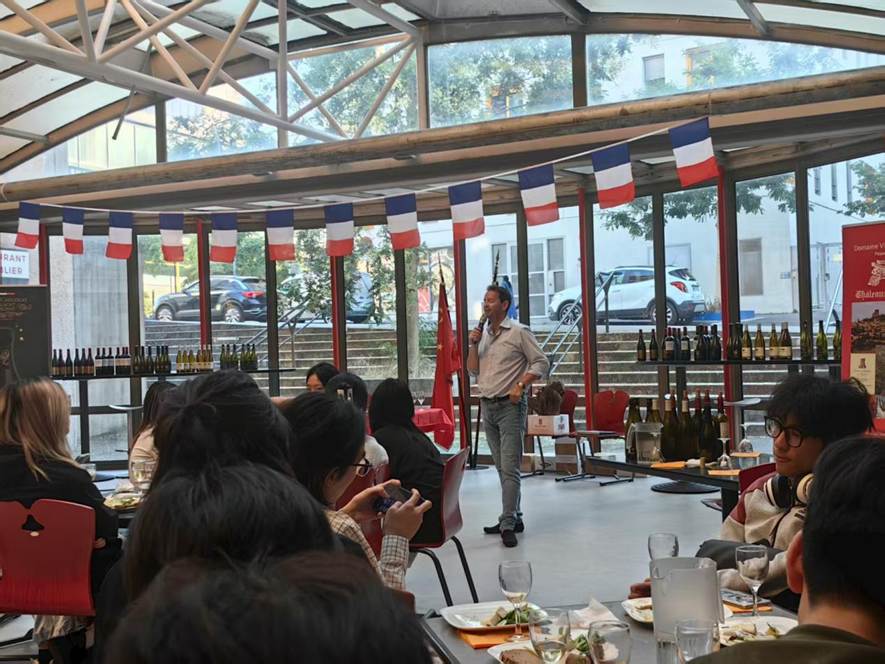
今天的最后项目是中法同学卡拉OK欢唱环节,大家都拿出看家本领,一展歌喉,在愉快的歌声和氛围中,今天的活动走向尾声。
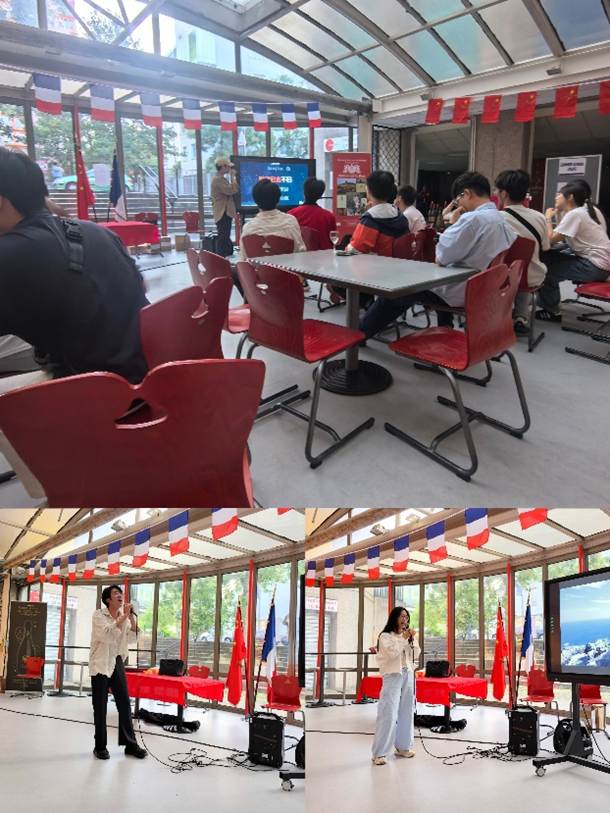
At 8:15 on July 8th, the students arrived at the lecture hall on time and began to analyze the sample photos and other materials obtained in the laboratory a few days ago according to the pre-arranged groups.
After confirming the division of labor for each group, the students threw themselves into the intense work. Some went directly to the laboratory to calculate the most cutting-edge experimental data, while others analyzed and identified the major categories of data based on the photos they had already taken. They were all busy and energetic. The French teachers also joined in the tense atmosphere, assisting the students in solving experimental problems and coordinating data disclosure. Each division of labor could be said to be a meticulous task, as each component and each indicator had different analysis methods, which made us a little dizzy at first. Fortunately, the teachers were experienced and guided us through our most confusing points. Under their careful guidance, the students quickly mastered the tricks and successfully completed the morning activities.
After a short nap, we were divided into two groups by class. One group stayed in Evry to continue the experimental course content; the other group took a bus to the nearby SOLEIL laboratory for a visit and study.
SOLEIL, whose name translates to "Sun" in French as Source Optimisee de Lumiere a Energie Intermediaire du LURE, is located on the Château Hill in Saint-Aubin, Essonne, a city in southern Ile-de-France. As a world-leading research laboratory specializing in third-generation synchrotron radiation sources, we departed at 12:45 and arrived at the facility by 14:00.
Guided by the institute staff, we entered the core area of the laboratory. The director first introduced us to the key equipment—the —— cyclotron. This device consists of three main components: an electron source that generates electrons; a small-loop acceleration magnetic field that accelerates electrons to 2750 eV under the constraints of the prototype magnetic field; and a large-loop acceleration magnetic field that directs high-quality electron beams at different energy levels required for various experiments.
While high-energy cyclotron accelerators may sound intimidating, laboratory staff assured us of their extremely safe design. The accelerator's casing is constructed using monolithic casting technology, featuring multiple radiation monitoring devices, a CNC-integrated control center, and precision measurement instruments. Standing above the device, we could feel slight vibrations, but no danger was present. To reassure us, researchers even demonstrated gentle jumps with us, proving that even significant movements wouldn't affect its operation.
The researcher patiently explained the applications of high-energy cyclotron accelerators and their immense value in scientific research. From fundamental studies in the microscopic world to cutting-edge technological exploration, this equipment plays an irreplaceable role. During the visit, we felt as if we had stepped into a futuristic science hall, gaining valuable insights. The two-hour tour concluded quickly. We took an unforgettable group photo at the laboratory entrance before reluctantly returning to EVRY University.
That night, the teachers and students of Sacré Coeur University held a wine and cheese lecture and tasting event for our Chinese-French family. French wine and cheese culture are significant symbols of their diet and lifestyle, deeply rooted in daily social interactions and traditions. Wine is not only a drink but also an integral part of French meals. Whether it's a family dinner or a casual gathering with friends, pairing wine with food is a common practice, which has also given rise to a professional wine-tasting culture, including the appreciation of wine's aroma, taste, and aftertaste. The students successively tasted white wine, champagne, and red wine, enhancing their understanding of French wine culture. There are hundreds of types of French cheese, and at this lecture, the students sampled soft Camembert, rich Roquefort blue cheese, and hard Comté cheese, among others. Each type has its unique production process and flavor, often related to local milk and traditional techniques.